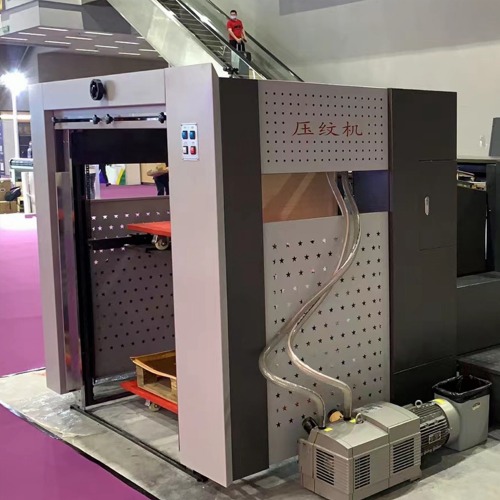News Center
Home / News Center / Industry News / What is Automatic 3D Refraction Embossing Machine and The working principle of Automatic 3D Refraction Embossing Machine
What is Automatic 3D Refraction Embossing Machine and The working principle of Automatic 3D Refraction Embossing Machine
2023-06-13
Here's a general understanding of the terms:
Automatic: The term "automatic" implies that the machine performs its functions with minimal or no manual intervention. It suggests that the machine is equipped with automation features, such as automated operation, control systems, and potentially programmable settings.
3D: The term "3D" refers to three-dimensional, indicating that the machine is capable of creating embossed patterns with depth and dimensionality. It suggests that the machine can produce tactile or visually textured effects on the surface of a material.
Refraction: Refraction refers to the bending or changing of the direction of light as it passes through a medium with a different refractive index. In the context of the machine, the term "refraction" may suggest that the embossed patterns created have a refractive effect, which could potentially enhance the appearance of the patterns by manipulating light in interesting ways.
Embossing: Embossing involves creating raised or recessed patterns on a material's surface. It is typically done by applying pressure or heat to the material, resulting in a textured design. In the case of the machine in question, it would imply that it has the capability to emboss 3D patterns on various materials.
Besides,the working principle of an Automatic 3D Refraction Embossing Machine would involve several key components and processes:
Material Feeding: The machine would have a system to feed the material (such as paper, plastic, or fabric) onto a moving platform or conveyor belt, ensuring a continuous supply of material for embossing.
Design Creation: The machine would incorporate a digital or mechanical system to generate or import 3D embossing designs. These designs could be created using specialized software or obtained from external sources.
Embossing Mechanism: The machine would feature an embossing mechanism capable of creating the desired 3D embossed pattern on the material. This mechanism could consist of a patterned die or plate that applies pressure and heat to the material, transferring the pattern and creating the embossed effect.
Refraction Effects: To achieve the 3D refraction effects, the machine may incorporate additional components or techniques. This could include the use of optical elements, such as lenses or prisms, placed strategically within the embossing process. These elements would manipulate the path of light passing through the embossed material, creating optical illusions or visual effects.
Automation and Control: The machine would be equipped with an automated control system that manages the movement of the material, coordinates the embossing process, and controls the activation and positioning of any optical elements for the refraction effects. This system would likely utilize sensors, actuators, and programmable controls to ensure precise and consistent embossing results.
Output and Handling: Once the embossing and refraction processes are complete, the machine would provide the finished embossed material as an output. Depending on the specific application, it may incorporate further processes such as cutting, trimming, or additional surface treatments to prepare the final product.


Share news
Products
of interest
of interest


 中文简体
中文简体 Español
Español

















